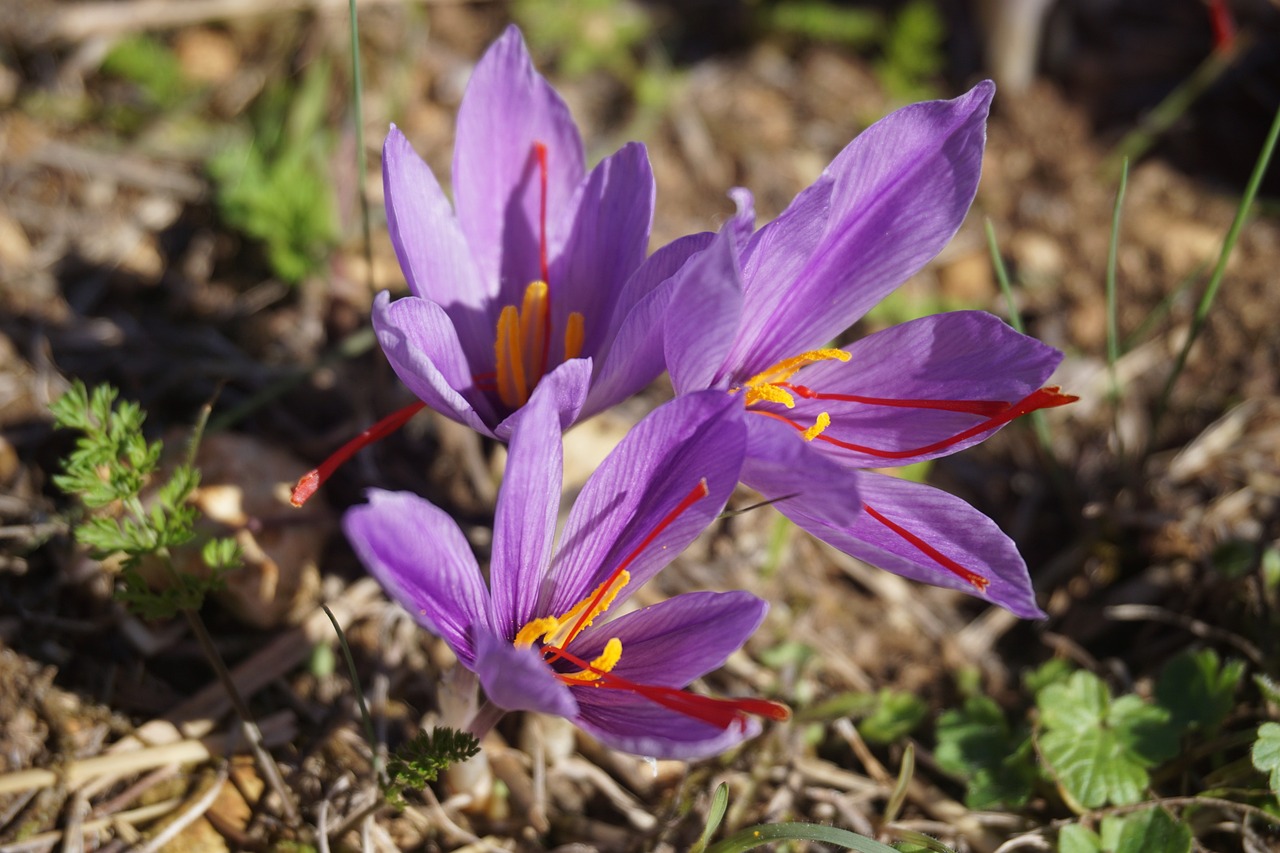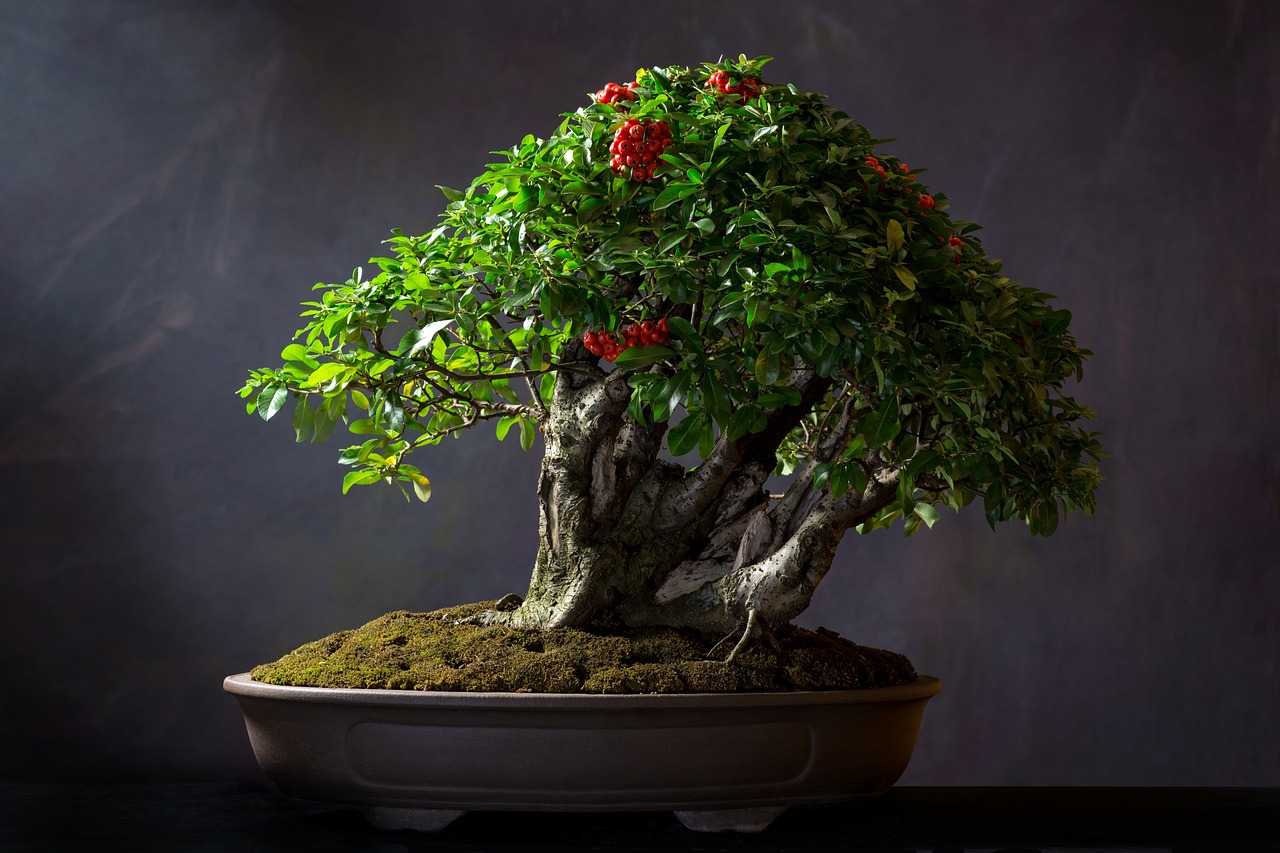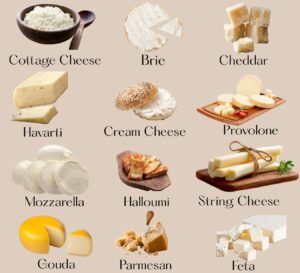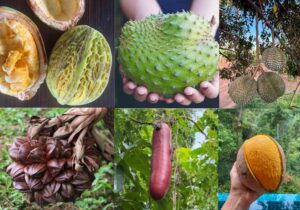 Pin
Pin Sweet Potato / Image by Laura Lisauskas from Pixabay
Across the kitchens, streets, and festivals of Asia, the sweet potato quietly holds a place of honor. It’s not a flashy ingredient, yet its presence is powerful—woven into childhood memories, rural resilience, modern food trends, and sacred rituals. In every corner of the continent, from mountain villages to urban cafés, this humble root transforms into something meaningful.
Its charm lies in its versatility. One region roasts it until it caramelizes, while another turns it into a creamy dessert or stir-fry. Some cultures mash it for temple offerings; others serve it sizzling on winter streets. Rich in nutrients and wrapped in tradition, sweet potatoes adapt to taste, climate, and belief—offering comfort with every bite.
Table of Contents
Steamed and Roasted – Street Food Traditions in China
 Pin
Pin Image from Wikimedia Commons
Across China, sweet potatoes are more than a vegetable—they’re a warm memory from a winter walk. On street corners, vendors roast them whole in makeshift barrel ovens. Their aroma drifts through the air, drawing in schoolchildren, office workers, and elderly wanderers. The charred skin peels away to reveal a golden, syrupy interior that’s comforting and sweet.
In colder provinces, steaming is also common. Slices of orange-fleshed sweet potatoes are laid in bamboo steamers, stacked and gently heated until tender. They’re enjoyed as breakfast with a splash of soy milk or eaten plain, appreciated for their clean, earthy taste.
This simple treatment brings out the depth of flavor without adding anything artificial. It reflects the Chinese philosophy of balance—preserving the natural sweetness while warming the body. The way how sweet potatoes are eaten in Asia often begins in these humble moments, where a root vegetable becomes a symbol of simplicity, comfort, and nostalgia.
Japan’s Imo Culture – A Sweet Autumn Tradition
 Pin
Pin Image by @japanesecookingthailand
In Japan, sweet potatoes—called satsumaimo—hold a cherished spot in seasonal life. As autumn sets in, the sound of a sweet potato vendor’s cart and its steam whistle signal comfort. The roasted satsumaimo is sold piping hot, wrapped in newspaper or brown paper. It’s a staple during school outings, picnics, or while strolling under fall leaves.
Beyond the streets, sweet potatoes appear in traditional Japanese sweets called wagashi. They’re mashed, sweetened with sugar, and shaped into delicate confections that pair well with green tea. The texture is smooth, subtly sweet, and full of the earth’s richness.
In home kitchens, sweet potatoes are simmered in soy sauce and mirin for a savory-sweet dish, or turned into creamy croquettes. They also appear in daigaku imo—deep-fried and glazed with a sugary soy coating. It’s this variety of preparations that shows how Japan brings elegance to a simple root. Each bite carries a sense of season, memory, and mindfulness.
Korean Goguma – Comfort Food with a Twist
 Pin
Pin Image by @terkenang.rasa
In South Korea, goguma (sweet potato) is more than a side dish—it’s an emotion. During chilly winters, people cozy up with hot, roasted sweet potatoes sold by street vendors. Their naturally sweet, fluffy insides are often eaten plain, making them a popular snack for those looking for comfort without guilt.
Koreans also use sweet potatoes in modern, unexpected ways. One favorite is goguma pizza, where mashed sweet potatoes are spread beneath layers of cheese and toppings. It’s a blend of savory and sweet that has a loyal fan base. In homes, goguma-mattang—fried sweet potato chunks coated in sticky syrup—is served as a dessert or festive treat.
There’s also the nutritional appeal. Goguma is often used in diet meals and lunchboxes for its fiber and low-calorie count. Roasted and stored in foil wraps, it’s a common snack in schools and gyms. This blend of taste, nostalgia, and health makes Korean sweet potatoes a beloved part of daily life.
India’s Shakarkandi – A Winter Delight Across Regions
 Pin
Pin Image by @vibe_2_connect
In India, sweet potatoes—locally known as shakarkandi—are deeply woven into winter traditions. On cold evenings, street vendors roast them on open flames and mix the flesh with tangy spices, lemon juice, and chopped coriander. The result is a warm, spicy, and citrusy snack sold in paper cones—beloved by students and office-goers alike.
In North Indian households, shakarkandi chaat is a seasonal favorite, combining roasted sweet potatoes with black salt, chili powder, and sometimes pomegranate seeds. The dish is refreshing and filling without feeling heavy. It’s also a go-to option during religious fasts, as it’s nutritious and energizing.
Further south, sweet potatoes are boiled and mashed with coconut, jaggery, and cardamom, becoming part of festive sweets or temple offerings. In tribal areas, they’re dried and stored for later use. This diversity in preparation reflects how regional flavors transform the humble tuber into a culinary centerpiece rooted in tradition and warmth.
Southeast Asia’s Sweet Potato Desserts – A Colorful Affair
In Southeast Asia, sweet potatoes dazzle not just through flavor, but through color and creativity. In the Philippines, purple sweet potatoes (ube) are used to make vibrant desserts like ube halaya—a thick, creamy jam that’s spooned onto bread, mixed into halo-halo, or turned into ice cream. Its rich texture and striking hue have made it an icon beyond local borders.
In Vietnam, sweet potatoes are simmered in coconut milk to create chè, a warm dessert soup served in small bowls. It’s often enjoyed in the evenings, combining sweet potato cubes, tapioca pearls, and the fragrance of pandan. The result is soothing and satisfying, loved by both young and old.
Thailand offers sweet potato balls—crispy outside, soft inside—sold as a street snack. Meanwhile, Indonesia incorporates sweet potato into steamed cakes and layered desserts. These sweets, often bright yellow or purple, not only taste delightful but carry cultural stories with every bite. It’s where tradition meets playfulness through this colorful root.
Rural Uses – Drying, Storing, and Survival Practices
In many rural parts of Asia, sweet potatoes are more than just food—they’re a lifeline. After harvesting, families slice them thin and dry them under the sun. This preservation method ensures food supply through harsh seasons. Dried sweet potato chips are later boiled, fried, or turned into porridge, offering nourishment during lean times.
In mountainous areas of Nepal and Bhutan, sweet potatoes grow well in tough soils. Farmers boil them as a daily staple or feed them to livestock. The drying process there often includes smoking over open fires, giving the chips a deep, earthy aroma that lingers in kitchens through winter.
These survival techniques are handed down through generations. They reflect resilience, creativity, and respect for nature’s cycles. While modern cities turn sweet potatoes into trendy meals, these simple preservation practices remind us of the root’s original purpose: sustenance, simplicity, and survival through the seasons. Rural kitchens still echo with this age-old wisdom.
Fusion Recipes – Sweet Potatoes in Modern Asian Kitchens
Across Asia’s urban centers, sweet potatoes are now finding their place in fusion cuisine. In Bangkok and Seoul, chefs turn them into noodles, used in gluten-free stir-fries or cold sesame salads. These translucent strands are chewy and light, offering a new texture while staying true to the root’s gentle flavor.
Asian bakeries have also embraced the trend. You’ll find sweet potato cream buns in Tokyo, purple ube cheesecakes in Manila, and flaky shakarkandi puffs in Delhi. These treats blend traditional ingredients with global techniques, pleasing both nostalgic elders and curious younger eaters.
Even drinks haven’t been left behind. Taiwan’s famous bubble tea now features sweet potato balls instead of tapioca pearls, giving each sip a smooth, warm twist. Sweet potato lattes, found in cozy Seoul cafés, are rich, earthy, and surprisingly addictive. These creative takes show how a humble tuber adapts gracefully into modern tastes without losing its soulful essence.
Health Focus – Sweet Potatoes as a Wellness Food
Sweet potatoes are more than just comfort—they’re also celebrated as a wellness powerhouse across Asia. In Japan and Korea, fitness influencers often promote baked sweet potatoes as a clean, natural carb. Packed with fiber, vitamins A and C, and slow-releasing sugars, they provide energy without causing blood sugar spikes.
In Ayurvedic practices of India, sweet potatoes are considered a sattvic food—one that calms the body and mind. They’re recommended for digestion and used during fasting rituals. Boiled or steamed with a sprinkle of black pepper and cumin, they’re a healing food with grounding effects.
Chinese medicine also regards sweet potatoes as warming and nourishing. They’re believed to support spleen and stomach health, and are commonly suggested for elderly or recovering individuals. These age-old views, now supported by science, make sweet potatoes a staple in health-conscious Asian households. The tuber’s role has moved from tradition to trend, staying deeply rooted in both nutrition and belief.
Religious and Cultural Roles of Sweet Potatoes in Asia
Sweet potatoes have spiritual meaning in many Asian cultures. In India, shakarkandi is often consumed during fasting rituals like Navratri or Ekadashi. Since it’s a non-grain food, it’s considered acceptable during these sacred times. Lightly seasoned and boiled, it brings both energy and devotion to those observing the fast.
In parts of Southeast Asia, sweet potatoes are included in ancestral offerings. Balinese ceremonies often feature them in baskets of fruit, rice cakes, and flowers placed at shrines. The root symbolizes earth’s abundance and is believed to carry prayers through its grounding energy.
In Japan’s Shinto rituals and harvest festivals, roasted sweet potatoes are sometimes offered to spirits. They represent gratitude for the harvest and the changing of seasons. This quiet presence in sacred spaces shows that sweet potatoes are more than sustenance—they’re a part of how people across Asia connect with the divine, nature, and heritage.
Childhood Memories and Family Traditions
In many Asian homes, sweet potatoes are tied to warm childhood memories. Grandmothers would roast them over coal stoves or open fires, filling the house with a cozy scent. In rural China or Japan, these moments weren’t just about food—they were quiet rituals of bonding, storytelling, and slowing down.
In India, sweet potato snacks mark school holidays or festival times. Children wait for the vendor’s whistle, rushing out with coins to buy a spicy cone of shakarkandi chaat. That sweet-spicy flavor often lingers in memory longer than any fancy meal. It becomes part of who they are.
Even today, as fast food grows popular, many parents continue these traditions. Sweet potato porridge is often a baby’s first solid food in Korean homes. In Vietnam, elders still share steamed cubes with their grandchildren during evening chats. These practices carry love, nostalgia, and quiet strength from one generation to the next.
Economic Importance and Small-Scale Farming
For many farmers in Asia, sweet potatoes are more than a crop—they’re a reliable source of livelihood. Unlike other produce, sweet potatoes grow in poor soil and need little water. This makes them perfect for small-scale agriculture in drought-prone areas across India, Vietnam, and the Philippines.
Families often grow sweet potatoes alongside other crops, creating food security and a modest income. In parts of Indonesia and Bangladesh, surplus yield is sold in local markets or made into chips, flour, or desserts. These cottage industries empower women and create jobs, especially in rural communities.
In recent years, the growing popularity of health foods has boosted sweet potato demand. Farmers have responded by exploring new varieties—purple, orange, yellow—based on market trends. Agricultural fairs, seed swaps, and local government support have further strengthened their reach. Sweet potatoes, once seen as humble famine food, now hold a bright place in Asia’s growing farm economy.
Seasonal Rhythms – Sweet Potatoes and Nature’s Timing
In Asian agricultural calendars, sweet potatoes hold a rhythm of their own. They’re planted just before the rainy season or during early monsoon, depending on the region. Farmers rely on instinct, tradition, and signs from nature—cloud patterns, soil texture, even the behavior of birds—to decide the perfect moment.
Come harvest time, entire families take part. In parts of rural China or northeast India, digging up sweet potatoes becomes a group effort, often followed by a simple feast. The first batch is roasted right in the fields, turning work into a celebration of nature’s gift.
These seasonal routines shape community life. In Japan, schoolchildren visit farms in October for imo-hori (sweet potato digging). In Thailand and Laos, harvest season marks the start of making dried chips for later sale. The cycle of planting, tending, and harvesting reconnects people to the earth, the weather, and each other—offering a slower, more intentional rhythm to daily life.
Regional Tastes – How Flavor Profiles Shape Recipes
Each part of Asia brings its own flavor philosophy to sweet potatoes. In northern India, bold spices like black salt, chili powder, and lemon juice dominate the taste, creating a chaat that’s tangy and fiery. In contrast, South India prefers subtle sweetness with hints of cardamom and coconut, often using sweet potatoes in festive desserts.
China’s culinary map is equally diverse. In Sichuan, sweet potatoes may be stir-fried with garlic and chili oil, giving them a smoky punch. Meanwhile, in coastal Fujian, they’re blended into soups or steamed with rice, adding body and a soft sweetness to the meal.
In Japan, recipes lean toward natural sweetness and soft textures. Steamed satsumaimo is often eaten with just a pinch of salt. This simplicity lets the potato speak for itself. Across Southeast Asia, however, coconut milk, pandan, and palm sugar enrich the dish. These contrasts show how culture, geography, and taste shape the journey of a single root in unique, meaningful ways.
Urban Revival – Sweet Potatoes in City Life and Pop Culture
In Asia’s bustling cities, sweet potatoes have made a surprising comeback. Once seen as a poor man’s food, they now grace menus at health cafés, bakeries, and food trucks. In Seoul, roasted goguma is sold in vending machines, offering a warm bite on the go. In Tokyo, trendy cafés serve satsumaimo toast drizzled with honey or miso butter.
Social media has played a huge role in this revival. On Instagram and YouTube, influencers share recipes for sweet potato smoothies, pancakes, and even desserts like brûlée-style slices. Ube-flavored cakes have become a craze in Manila, symbolizing both tradition and trend in one bite.
This modern popularity hasn’t erased the root’s humble past—it’s elevated it. City dwellers embrace sweet potatoes for their taste, health benefits, and emotional connection to childhood or culture. As food trends shift, the sweet potato has stayed relevant by adapting—remaining honest, nourishing, and beautifully simple at heart.
One Root, Many Stories – The Soul of Asian Kitchens
Across Asia, the sweet potato travels through generations, cultures, and seasons—quietly shaping stories, flavors, and memories. It’s not just a food but a symbol of adaptability and warmth. From smoky street snacks in China to creamy ube desserts in the Philippines, its journey is as rich and varied as the continent itself.
This humble root has proven that comfort doesn’t require complexity. It nourishes children during fasting rituals, supports farmers in dry lands, and delights café-goers with gourmet reinterpretations. Whether in sacred offerings or viral recipes, sweet potatoes have earned their place in hearts, homes, and histories.
As urban trends come and go, and diets shift with the times, the sweet potato continues to stand firm—unfussy, flavorful, and full of meaning. Its role in Asia’s culinary heritage is not just about taste. It’s about connection—to land, to family, and to something timeless that simmers quietly in every kitchen it touches.
FAQs
In Asia, sweet potatoes are steamed, roasted, boiled, fried, or mashed. Street vendors often roast them whole, while home kitchens prepare them in curries, desserts, or snacks based on regional preferences.
Sweet potatoes are naturally warming and easy to digest, making them ideal for winter. In countries like China, Korea, and India, they are sold hot on the streets or made into warm, comforting dishes during the colder months.
Yes, many Asian countries use sweet potatoes in sweets. Examples include ube halaya in the Philippines, chè in Vietnam, and coconut-sweet potato puddings in South India. These desserts often mix sweet potatoes with coconut milk, jaggery, or sugar.
Absolutely. Sweet potatoes are rich in fiber, antioxidants, and vitamins, making them a popular choice in health-conscious diets across Asia. They’re often used in weight-loss plans, fasting meals, and clean eating routines.
Flavoring varies by region. In India, bold spices and lemon juice are common; in Japan and Korea, natural sweetness is highlighted; in Southeast Asia, coconut and palm sugar bring richness; while in China, soy sauce and garlic are sometimes added for depth.


































